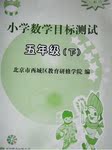题目内容
Chuck Wall teaches management and human relations at Bakersfield College. He walked into class one day and told his students that their homework was to perform one act of random kindness. His students did not understand the homework and didn’t know what to do, but the professor would not answer their questions. He encouraged his students to work it out for themselves.
One week later, the students entered the classroom excited to share their stories. One student told of giving away blankets to the homeless. Another reported on helping a dog to find its owner, and another student had been trying to find a long, last friend. Students were engergized by the homework assignment and wanted other people to be kind too. With the support of local businesses, the students made stickers to put on cars that invited people to do something kind for others. They sold the stickers and decided to donate the money to a center for the blind—not surprising as Professor Wall is blind.
Since then, similar knidness activities have been started in schools around the world. Many schools organize a Random Acts of Kindness Week, around November 13th, to celebrate World Kindness Day. Some schools use each day of Random Acts of Kindness Week to perform a different kind act, such as making a new friend, helping someone, doing community service, or raising money for a charity. Students learn to consider other people and think about how small actions can make the world a better place.
61. The professor’s homework was to ask his students _________.
A. to write about kindness
B. to be kind to strangers
C. to spend time helping others
D. to go out to raise money.
62. We learn from the passage that __________.
A. Chuck’s students are not clever enough
B. the students didn’t do Chuck ‘s homework
C. Chuck Wall is an unusual teacher
D. no students enjoyed Chuck’s homework.
63. It is certain that ___________.
A. the students got good grades in Chuck’s class
B. kindness activities are not widely accepted
C. Chuck Wall was not good at designing homework
D. the students only helped people they knew
64. In kindness activities students learn ___________.
A. to deal with difficult things
B. to do great things every day
C. to know about the world
D. to consider other people
65. Which is the best title of the passage?
A. Learning Kind Things B. Teaching Kindness
C. World Kindness Day D. Bakersfield College
答案: CCADB
解析:
【语篇解读】
本文中的教授给学生布置了一道发散性的题目,让他们自己去感受并完成,其间,学生明白了kind的真谛,做了很多的善行且乐于与人分享这些友善的故事。最终此次善行活动被推及到周边学校及地区引起较大的反响和轰动。全文行文自然,深入浅出,令人寻味和思考。
本文单词难度适中,有少量长难句,语意表达得比较易读易懂,难度适中。
61:细节题,题干问文中教授给学生布置的作业是什么,根据题干我们可以对应到文章中“…and told his students that their homework was to perform one act of random kindness.”,(随机,偶然的善行),所以本题是一个细节题。根据对文章中提到的“to perform one act of”和理解我们可以很容易的排除掉A和D两个选项。最终在B和C选项中纠结。所以此处我们还需要回到原文,找出最符合原文的选项。太过阅读和对比会发现B选项太过笼统,并且根据文章后面的情节展开可以看到大量的学生帮助他人的行为和事例,可以锁定答案为C选项。所以,在做细节题的时候,面对强干扰选项,我们一定要回到原文,再次检索,根据文章提示,找出最符合原文的选项。答案选:C
62:推理题,ABD三项均为否定,负面,消极的选项,A选项与文章没有联系,文中并未提及教授的学生聪明与否,相反从学生的所作所为可以看出他们很聪明且有爱心。B选项与原文意思相反,从“One week later, the students entered the classroom excited to share their stories. One student told of giving away blankets to the homeless…”
可以排除该项。而从“Students were engergized by the homework assignment…”可以看出D选项也是错误的。
所以,答案选:C
63:推理题,我们需要对每个选项进行逐个推敲课排除。
A选项:在文章中并无明显的证据,继续往下看
B选项:与该句子“Since then, similar knidness activities have been started in schools around the world.” 矛盾
C选项:“Students were engergized by the homework assignment…”可以看出学生对此次作业还是很感兴趣的,足以说明C选项错误
D选项:从“One student told of giving away blankets to the homeless.” Homeless与 only people they knew矛盾。
所以,答案选A
64:细节题,根据“Students learn to consider other people and think about how small actions can make the world a better plac” 可知答案选:D
65:主旨题(选最佳标题),A选项:学习善行,友善。B选项:善的教育。C选项:世界友善日。D选项:Bakersfield大学。其中C和D都是比较好排除的选项。那么这篇文章到底是讲学习善,还是关于善的教育呢?因为本文是命名题,而文章名或文章标题的拟定除了要结合文章主旨之外,在某种程度上还会影响作者的行文。文章开篇讲到教授的作业,通过后文不难看出此教授的高明之处,通过让学生自己去理解并进行实践的方式来教导学生什么是善。因此答案为B选项。
体裁:记叙文
话题:友善
难度:适中
考点:
61:细节题
62:推理题
63:推理题
64:细节题
65:Title题

 天天向上一本好卷系列答案
天天向上一本好卷系列答案 小学生10分钟应用题系列答案
小学生10分钟应用题系列答案 目标测试系列答案
目标测试系列答案
